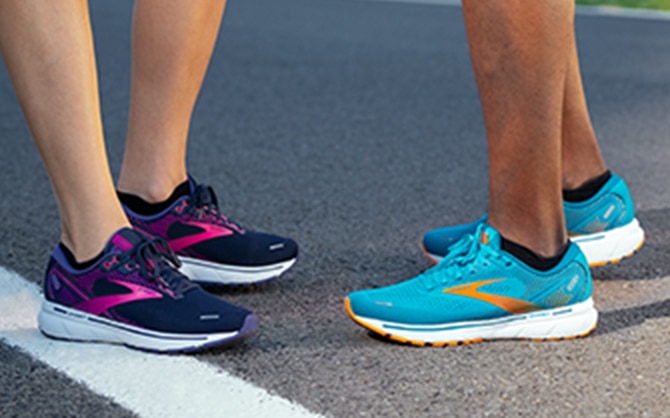Best Brooks running shoes for supination

Biomechanics are as unique and varied as fingerprints. We all have our own quirks and patterns, and no two runners are exactly alike. It's important to find a shoe that will accommodate your individual needs. And while no two runners are the same, many runners will share certain traits in common. One of those traits is called supination, or under pronation. If you're a runner, understanding your pronation is key to ensure you have the right running shoes, to avoid injury.
What is supination?
Supination is a pattern in the gait cycle some runners encounter during their stride. For people who supinate, the feet lean outward, as the ankles roll away from each other. This can lead to excess pressure along the lateral edges of the feet and can sometimes result in lateral strain on the knees as well.
What can be done about supination?
With supination, it's important to provide a very balanced platform for the foot. Because of this, Neutral shoes tend to be the most appropriate styles for supinators. Shoes in our Support category (also referred to as "Stability" shoes) are designed to protect the feet and the knees from the effects of overpronation, which means Support shoes will target the medial sides of the feet with extra structure. For some runners who supinate, this extra support can exacerbate their supination and cause the shoes to wear out prematurely or potentially build toward discomfort or injury over time. Neutral shoes greatly reduce this risk.
How to tell if you underpronate?
When you run as a supinator, your weight will shift to the outsides of your feet, so looking under your running shoes is the best thing to look at. Check under your shoes and if you spot wear and tear on the outer edges of your feet, this is a sign of supination. Additionally, head to your local sports or running shop. The experts there will be able to do a gait analysis to identify your running type and will be able to give personalised tips.
What can be done about supination?
With supination, it's important to provide a very balanced platform for the foot. Because of this, Neutral shoes tend to be the most appropriate styles for supinators. For some runners who supinate, this extra support can exacerbate their supination and cause the shoes to wear out prematurely or potentially build toward discomfort or injury over time. Neutral shoes greatly reduce this risk.
3 important things to look for in running shoes for supination
If you're a supinator, it's important that you get the right shoes to support your feet and your unique running stride. Here are three key things to look out for when trying to decide on the right type of running shoes for supination, to suit your body:
-
Shoes that fit properly
While it's true that every runner should be looking for shoes that are comfortable, it's particularly important for those who supinate. When you're a supinator, it's crucial that your foot is stabilised as much as possible by your shoes. Therefore, you need to get shoes that fit correctly both length-and width-ways. If your shoes don't fit properly, then they'll allow your foot to supinate naturally, rather than restricting it.
-
Added cushioning, but not too much
If you're a supinator, you don't want to choose shoes with a huge amount of cushioning, as extra-bouncy cushioning could make the lateral movement of your foot even more pronounced, making it less stable. However, some cushioning could be beneficial for you to absorb some of the impact when your foot hits the ground. Supinators tend to heel strike, so it's important that you look for shoes with extra cushioning at the heels.
-
Ankle support
Look out for shoes that support your ankles when you run, with in-built technology to support your feet in their natural movement pattern. Supination can put pressure on your plantar fascia which, over time, can lead to plantar fasciitis, one of the most common running injuries so you'll want shoes that can lessen the risk as much as possible.
What are the best running shoes for supination?
The best type of running shoes for supination are Neutral shoes. Shoes with a broad base under the foot tend to do a great job as well. Cushion is often helpful to protect the lateral area of the foot from the sustained stress that supination contributes to. One great options is the Ghost. For runners who prefer a bit less cushioning, the Launch or Revel will allow for a snappier, more responsive ride, but will maintain that Neutral base under the foot to accommodate supination.
This is a carousel. Use next and Previous buttons to navigate.
Not sure what shoe is right for you?
Try our Shoe Finder or try a running store to try on a pair of Brooks in person.
